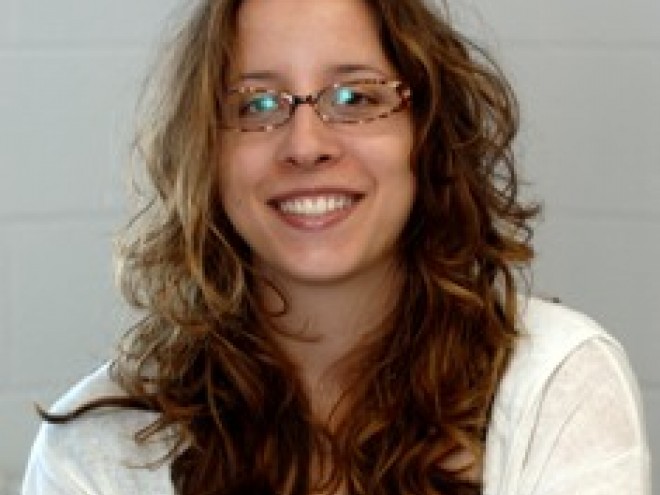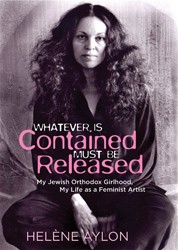By
– August 26, 2011
InOrthodox Jews in America, Jeffrey S. Gurock lovingly provides a comprehensive portrait of pious Jews in America, the “Treif Land.” He begins with Asser and Miriam Levy, the first Jewish settlers to seek their fortunes in New Amsterdam in 1655. Historical records appear to document that Asser Levy was quite concerned with his religious observance. He successfully petitioned the new British authorities for the right to not have to slaughter hogs as a butcher. Upon the death of the Levys, an inventory of their possessions included a parcel of old books, possibly prayer books, and two sets of all their kitchen items — two chopping knives, two kitchen basins, and two sets of place settings for each of them. This suggests they might have been observing the dietary laws.
Gurock systematically describes how the devout built the communal infrastructure and developed a cadre of skilled functionaries to meet the requirements of ritual observance including Jewish cemeteries, synagogues, kosher food, mikvehs, matzoh factories, yeshivas, and civil rights law protection for being a Sabbath observer. Gurock uses the metaphor of the “big tent” to provide a nonjudgmental picture of the early and present day struggles to stay “punctilious” inobservance. He argues that to fully understand the diversity of observance among those who identify with Orthodox Judaism, one must place them within their own time and place. He fully acknowledges there is great complexity “involved in delineating a spectrum of Orthodox practice.” For example, sending one’s children to an all-day Jewish school is “expected” of Orthodox Jews today, but prior to 1886 and the formation of boys only yeshiva Etz Chaim on the Lower East Side of New York there were no all-day yeshivas available. Even today, there are small Orthodox congregations dispersed across the nation, where some of the congregants send their children to the public schools and have them get religious instruction from the local Orthodox rabbi; some of the families drive to Sabbath services and park their cars out of sight of the shul. Gurock also describes the lives of the strictly observant communities thriving in such places as Dallas, Atlanta, Miami, Memphis, Houston, Philadelphia, Boston and, of course, Boro Park, Monsey, and Lakewood, New Jersey.
Gurock tackles several issues that roil the Orthodox community including “Orthodox vs. Orthodox” battles, Orthodox feminism, dissenting views on Zionism and Israel, and the very difficult issue of the public role of the observant community toward its “moral miscreants.” These are the people who “ostensibly have committed themselves to devout observance of the Torah’s teachings” but have committed “acts of unethical and even illegal turpitude” such as skimming off money from federal funds or extorting money from their divorce-seeking wives, thereby leaving the wives “chained” to a “sorry future life.” Too often, these transgressors position themselves within “the center of the Orthodox tent” while their very acts denigrate piety. Orthodox Jews in America is a must-read for scholars studying the Jewish experience in America.
It is a fun read for all others, regardless of one’s ritual observance. The scholarly and fascinating endnotes enable the reader to do even further reading on the subject. Overall, the book is a wonderful social history of American life filled with detailed portraits of Jewish life in America and the social forces that sent these immigrants to this libertine land.
Jeffrey S. Gurock is the Libby M. Klaperman Professor of Jewish History at Yeshiva University. He is the author and editor of fourteen books, most recently Judaism’s Encounters with American Sports (Indiana University Press, 2005). Index, notes.
Gurock systematically describes how the devout built the communal infrastructure and developed a cadre of skilled functionaries to meet the requirements of ritual observance including Jewish cemeteries, synagogues, kosher food, mikvehs, matzoh factories, yeshivas, and civil rights law protection for being a Sabbath observer. Gurock uses the metaphor of the “big tent” to provide a nonjudgmental picture of the early and present day struggles to stay “punctilious” inobservance. He argues that to fully understand the diversity of observance among those who identify with Orthodox Judaism, one must place them within their own time and place. He fully acknowledges there is great complexity “involved in delineating a spectrum of Orthodox practice.” For example, sending one’s children to an all-day Jewish school is “expected” of Orthodox Jews today, but prior to 1886 and the formation of boys only yeshiva Etz Chaim on the Lower East Side of New York there were no all-day yeshivas available. Even today, there are small Orthodox congregations dispersed across the nation, where some of the congregants send their children to the public schools and have them get religious instruction from the local Orthodox rabbi; some of the families drive to Sabbath services and park their cars out of sight of the shul. Gurock also describes the lives of the strictly observant communities thriving in such places as Dallas, Atlanta, Miami, Memphis, Houston, Philadelphia, Boston and, of course, Boro Park, Monsey, and Lakewood, New Jersey.
Gurock tackles several issues that roil the Orthodox community including “Orthodox vs. Orthodox” battles, Orthodox feminism, dissenting views on Zionism and Israel, and the very difficult issue of the public role of the observant community toward its “moral miscreants.” These are the people who “ostensibly have committed themselves to devout observance of the Torah’s teachings” but have committed “acts of unethical and even illegal turpitude” such as skimming off money from federal funds or extorting money from their divorce-seeking wives, thereby leaving the wives “chained” to a “sorry future life.” Too often, these transgressors position themselves within “the center of the Orthodox tent” while their very acts denigrate piety. Orthodox Jews in America is a must-read for scholars studying the Jewish experience in America.
It is a fun read for all others, regardless of one’s ritual observance. The scholarly and fascinating endnotes enable the reader to do even further reading on the subject. Overall, the book is a wonderful social history of American life filled with detailed portraits of Jewish life in America and the social forces that sent these immigrants to this libertine land.
Jeffrey S. Gurock is the Libby M. Klaperman Professor of Jewish History at Yeshiva University. He is the author and editor of fourteen books, most recently Judaism’s Encounters with American Sports (Indiana University Press, 2005). Index, notes.
Carol Poll, Ph.D., is the retired Chair of the Social Sciences Department and Professor of Sociology at the Fashion Institute of Technology of the State University of New York. Her areas of interest include the sociology of race and ethnic relations, the sociology of marriage, family and gender roles and the sociology of Jews.





